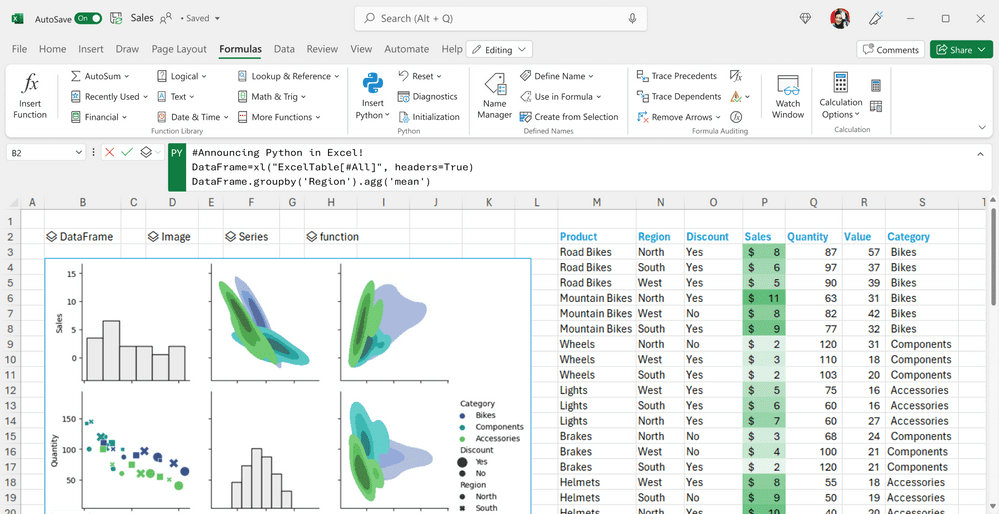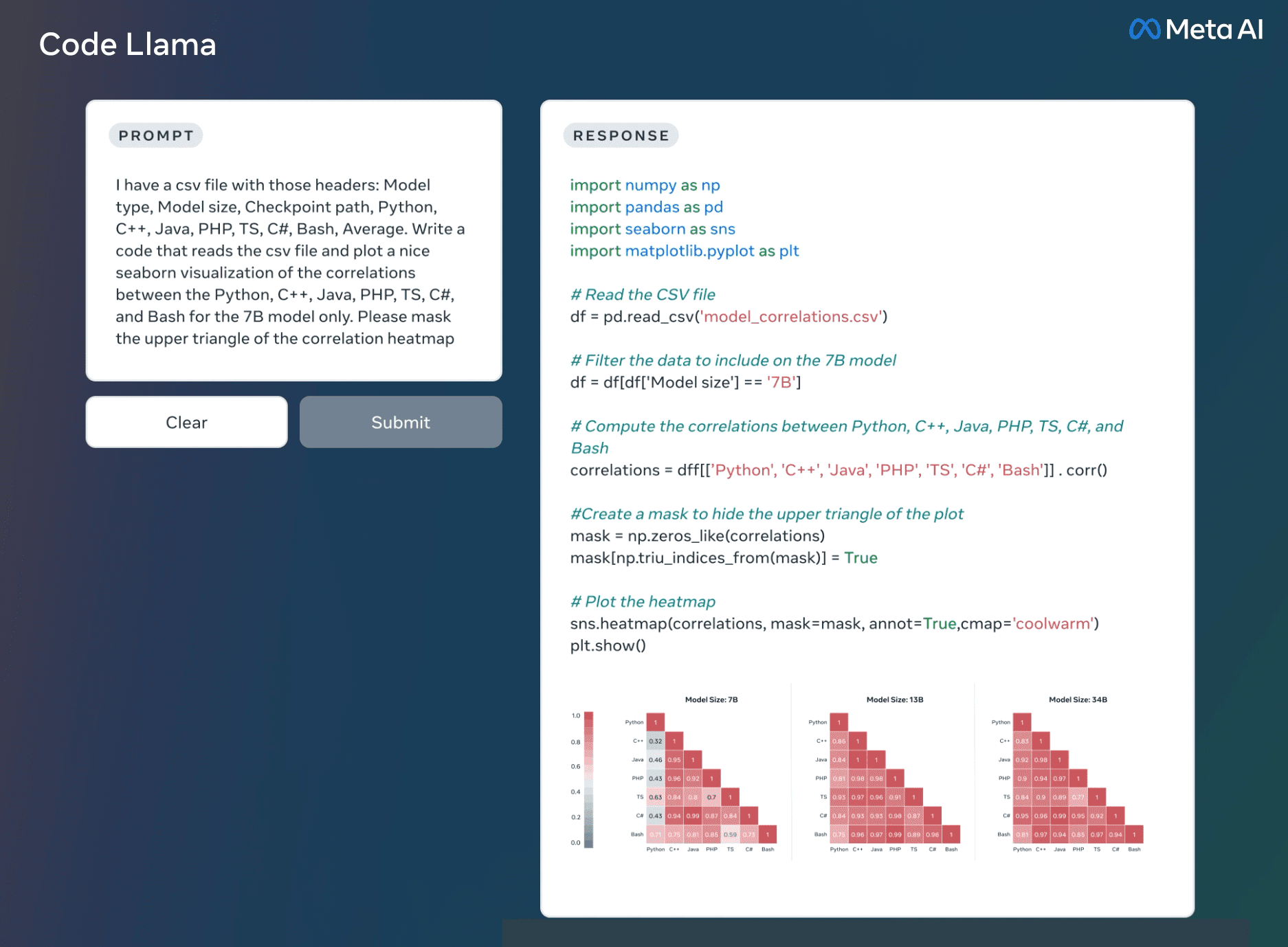
August has ended, and we've rounded up the most interesting IT news you might have missed. While Linux offers to take advantage of the new version of the operating system and Ubuntu Desktop shows off its development plans, Figma DevMode has seen about 200 updates and several new AI tools.
Linux 6.5 and the Ubuntu Desktop Development Plan

On August 27, 2023, Linus Torvalds introduced the first stable release of the Linux 6.5 kernel.
In the new version of the operating system, ACPI CPUFreq for Zen 2 systems has been replaced by the AMD P-State EPP driver, which is now enabled by default. Also enabled by default in Linux 6.5 is support for AMD FreeSync Video, the new AMD Ryzen systems, USB4 v2, and the MIDI 2.0 kernel driver.
Among other things, load balancing for Intel hybrid processors has been improved, and more work is underway to prepare for WiFi 7 wireless hardware support.
Meanwhile, Canonical has released a roadmap for the Ubuntu Desktop distribution. The announced changes will be introduced with the release of Ubuntu Desktop 23.10.
Ubuntu Desktop has over 6 million monthly active users and is the most popular Linux distribution for developers (about 27% in the Stack Overflow 2023 developer survey). But the developers are not stopping there and plan to expand the capabilities of Ubuntu Desktop:
- System support for Dell, HP, Lenovo, Raspberry Pi, and other Arm-based and cloud-based devices
- A more cohesive and uncluttered interface, including an updated app store
- With the move to Subiquity, it will be possible to use auto-install to customize desktop images via Cloud-init
- Split the screen into 4 parts as a mosaic to manage different processes more efficiently
- Hardware acceleration for video encoding and decoding in Chromium Snap
- New request mechanism to manage additional permissions requested by applications
- Experimental implementation of hardware full disk encryption in the Ubuntu installer
- Porting of Netplan network interfaces to Ubuntu Desktop
In parallel, developers are working on Ubuntu Core Desktop, an unmodified version of the classic desktop, an additional choice for Linux desktop users designed to improve security, quality, and stability.
Figma DevMode updates

During two months of open beta testing, gathering feedback and suggestions, the Figma team has released over 200 updates to the Dev Mode workspace. The blog article covers some of the more notable improvements.
- Add status labels to components, instances, and frames in addition to sections, making it easier to share development assets without completely reorganizing the file
- Layout grids, rules, and outline mode are accessed from the view menu or using the same keyboard shortcuts as in design mode
- You can see when a component has been detached and compare it to the main component
- Android XML and iOS UIKit are back as code options
- Expand your palette with the new UIColor option (via the color format drop-down in the Inspect panel)
- Version history allows you to view and review different iterations of a project by clicking the filename in the toolbar
Usability has also changed:
- When selecting blocks to display on the canvas and in the generated code, you can select a rem block with only text properties and leave the other properties in pixels
- You can select and export multiple objects on the canvas at once
- All files and notifications from your Figma account are displayed in VS Code, making it easy to switch between projects and track changes
- If there's a raw value with a high probability of matching a variable in your design system, Figma will suggest that variable so designers don't have to add it manually
- You can check values not only through code snippets but also as Figma properties
- and more
The code generation functions have also been updated and some bugs have been fixed.
PayPal patents blockchain data compression system

PayPal is trying to patent a system for "compressing and storing blockchain data." As the name suggests, this system compresses blocks to make them easier to store.
The need for blockchain data storage is growing as more transactions are verified by network nodes and added to the blockchain in the form of blocks. Because the blockchain is an immutable record of transactions, the number of blocks increases with each new transaction. When a block reaches a certain size, the system compresses it. The compressed block must then be stored with a data storage provider.
Instead of creating the original block, the system creates a "new-age genesis block," in PayPal's words. The block contains not only a digital trail, or "root hash value," confirming the content and authenticity of the original block but also the address where the original block is stored. PayPal said that implementing this tactic will "reduce the network costs of transmitting and distributing a large blockchain."
In addition to working to improve blockchain solutions, the company offers ways to buy, transfer, and sell certain cryptocurrencies, including Bitcoin, Ethereum, and Litecoin, within its app. Recently, PayPal launched its first stable cryptocurrency, PayPal USD.
HTTPS protocol in Chrome has been proposed to be strengthened

While over 90% of Chrome users use HTTPS sites, 5-10% of traffic still remains on HTTP. Using the insecure HTTP protocol goes against the browser's desire to secure the web environment.
Chrome will automatically update all http:// navigation to https://, even if you click on a link that explicitly says http://. This works similarly to the HSTS update, but Chrome will detect when this update fails (for example, because the site provides an invalid certificate or returns an HTTP 404) and automatically returns you to http://. This change ensures that Chrome only uses insecure HTTP when HTTPS is truly unavailable. Experiments with this new feature are currently underway in Chrome 115.
In addition, as part of user protection, a warning window will appear before downloading files from sites without a secure connection. This feature will roll out in mid-September.
Chrome will offer HTTPS-First mode to all users, which will attempt to update all page loads to HTTPS and display a full-page warning before loading sites that don't support it. Currently, HTTPS-First is available to users enrolled in the Advanced Protection Program. There are plans to expand the way HTTPS-First works in the near future, including enabling it by default in Incognito mode for safer browsing.
Microsoft adds Python in Excel

Microsoft has released a preview of Python in Excel, which allows you to integrate Python and Excel analysis into a single Excel grid for a continuous workflow.
Python in Excel combines powerful Python libraries for data analysis and visualization with Excel functions. You can work with data in Excel using Python graphs and libraries and then use Excel's formulas, charts, and PivotTables to further refine your findings.

Using Excel's built-in connectors and Power Query, you can easily feed external data into Python in Excel workflows. Python in Excel uses the Anaconda Distribution for Python, which runs on Azure and includes the most popular Python libraries, such as pandas for data manipulation, statsmodels for advanced statistical modeling, and Matplotlib and seaborn for data visualization.
AI innovations and updates

August provided us with the release of several updates and new products with artificial intelligence that can be useful in work. Meta has introduced two interesting tools. The SeamlessM4T neural network, or multilingual model, can easily translate speech into text. At the moment, SeamlessM4T knows almost 100 languages and can:
- Automatically recognize speech
- Convert speech into text
- Convert (translate) speech into speech
- Perform text-to-speech translation
- Convert text to speech
The UnitY model used to create the tool consists of three main components that work in sequence. The self-aware speech encoder w2v-BERT 2.0 learns to find the structure and meaning of words in speech by analyzing millions of hours of multilingual speech. The coder takes an audio signal and breaks it down into smaller pieces, and builds an internal representation of what the speech is about. Learn more about how SeamlessM4T works.
Meta has also released Code Llama, a large language model (LLM) that can use text prompts to generate code. Many of today's most popular languages are supported, including Python, C++, Java, PHP, Typescript (Javascript), C#, and Bash.

The program can generate code from other code and text prompts (e.g. "Write me a function that prints the Fibonacci sequence"). Code Llama can also be used for code completion and debugging.
And, the final news! After months of testing, Microsoft has officially announced the launch of the Bing Chat bot for all Chrome users. In late August, Microsoft also tested Bing Chat's "no search" feature, which allows the chatbot to answer questions without using a web search.
In addition, the Swiftkey mobile keyboard app allows users to access Bing Chat for 30 chats per day without a Microsoft account. Bringing Bing Chat to Chrome and Edge Mobile should lead to more users of Microsoft's artificial intelligence chatbot.
VPS
Choose the suitable configuration and enjoy all the benefits of a virtual private server.
From $4.99/mo

